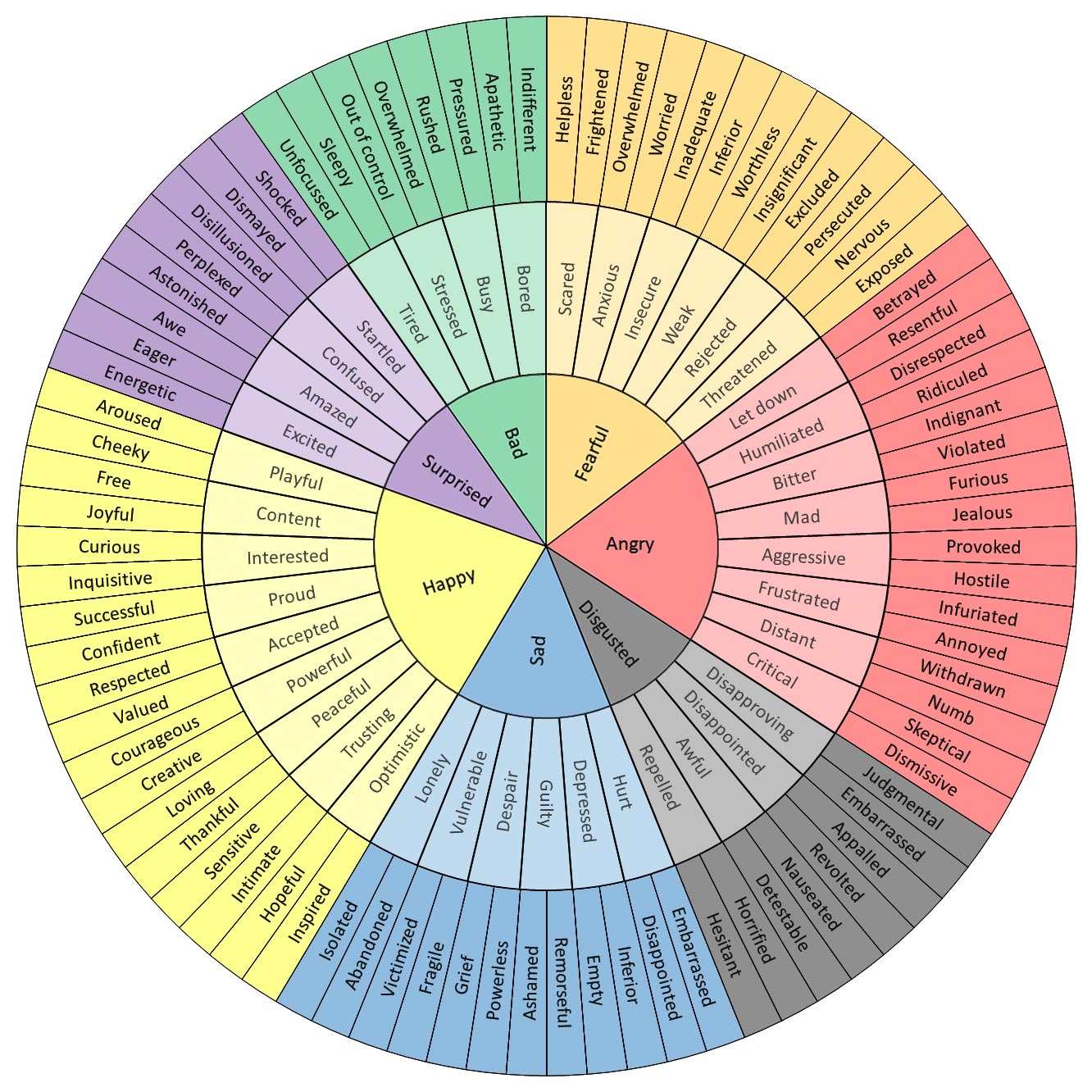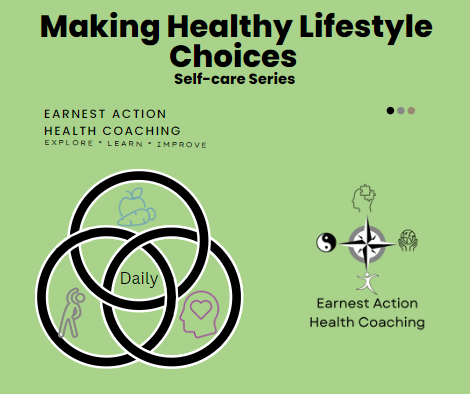Self-care Series
Making Health Lifestyle Choices daily is the hardest thing we do. For me the current events of the day; the war in Ukraine, the pandemic, gun violence, and intolerance drive me to seek out activities that make me feel better. My choices are only sometimes good. I eat ice cream, have two too many adult beverages, and hit the snooze alarm causing me to miss my exercise time. Fortunately, I learned not to beat myself up about these choices. Since I track the activities, I can face the choices I made and take small actions to make better ones.
This is the second installment of my Self-care series. We will focus on Making Healthy Lifestyle Choices in healthy eating, physical activity, and emotional health. These three areas are most important because they address two key risk factors for chronic disease; poor nutrition and lack of physical activity. Poor emotional health can prevent improvement in the other areas because one feels they can not succeed or lacks the motivation to move or eat well. I see these three areas as interlocking. Higher physical activity has been proven to improve mood and self-efficacy. Good food can elevate joy and help us feel wonderful.
Healthy Eating
The Dietary Guidelines for Americans have five key guidelines. You can find information on how to build a healthy routine here (Spanish). First is to follow a healthy eating pattern throughout your life. This includes:
- Variety of vegetables
- Fruit
- Grains, primarily whole grains.
- Fat-free or low-fat dairy.
- Foods rich in protein like legumes, nuts, soy products, lean meats, poultry, and eggs.
More information can be found at MyPlate Nutrition . What I really like about the MyPlate site is that it has advice for people during special stages of their life like pregnancy, teens, and older adults. Many of us struggle with the affordability of food. The Shop Simple With My Plate app provides information on budget-friendly foods and lists of local savings by zip code. Some stores even accept SNAP EBT.
I suggest starting with one meal a day that you know you eat. Does this meal currently include a vegetable? Could you add fruit as a dessert? Could you substitute a bean dish sometimes? I recently attended a continuing education presented by Monica Reinagel where she presented her Nutrition GPA app and the science behind it. This app has really helped me be more aware of simple changes I could make to improve my eating grade.
When you are ready for more.
- Know how much you should be eating.
- Learn more about the daily quantity for healthy eating patterns (U.S. Style, Mediterranean, Vegetarian). Page 123 of the Dietary Guidelines for Americans.
- Learn to plan ahead.
Physical Activity
An earlier blog post provided information on activity levels . People with health conditions or impairments have special considerations for activity. For you a visit to your physician and/or fitness professional is a great idea.
Think first about where you are now.
Think first about where you are now.
Are you moderately active for 150 minutes each week (25 minutes each day?). What is holding you back?
- Motivation. Most importantly Start. Small improvements will accumulate. Add 10 minutes to where you are now. Find an activity you like. Walk, Cycle, and lift some water bottles. I have even climbed my stairs in a pinch. Once you are moving for a couple of weeks, then think about how to avoid setbacks and add another 10 minutes. In a few weeks you’ll feel great.
- Affordability. A gym membership may never be needed. Is walking possible for you? A decent pair of shoes is what you need. 12 oz water bottles or gallon water jugs make great weights to lift. Does your city have a community center with a gym? Does someone you know have fitness equipment gathering dust?
- Time. Family, work commitments, friends, TV! Well TV, stand up and walk in place. For many people early morning is the best time. I have a teacher friend who started working out at 5:30 am. She gives herself the first hour of the day as a gift. Track what you are doing hour by hour for a week. Review the results. Are there 30 minutes for you?
| Physical Activity Level | Moderate Intensity Minutes Per Week | Summary of Overall Health Benefits | Lifestyle Application |
| Inactive | No activity beyond baseline | None | Being inactive is unhealthy |
| Insufficiently Active | Above baseline and less than 150 minutes per week | None | Lower levels of activity are preferable to inactive lifestyle. |
| Active | 150 – 300 minutes per week | Substantial | More benefits at higher level |
| Highly Active | greater than 300 minutes per week | Additional | No identifiable upper limit of activity above which there are no additional benefits. |
Emotional Health
Emotional wellness is the expression and management of one’s feelings to cope and thrive in relationships and pursue acceptance of your emotions. I am not a mental health professional so I cannot give specific advice for your situation. If you are having thoughts of self-harm, call 998 Suicide & Crisis Lifeline to get help. One of the tools I suggest clients complete is a PHQ-9, Patient Health Questionnaire. This tool is designed to be used with a healthcare professional. If you feel concerned about your mood, there are resources that can help. I know as a veteran, I have problems hiding my emotions. Stress can be good and bad. If you are interested in knowing more visit my blog post.
Happy always?
Notice the definition of emotional wellness does not mean that we are always happy. All people have a range of emotions. When you look at the Feelings Wheel, are you able to accept the emotions you are experiencing? Are you taking the time to reflect on your feelings? Would mindfulness training help you relax and be less judgemental? Does deep breathing help you feel more centered?

Disclaimer. The information provided in this article may not be appropriate for all people. If you are not currently exercising or have or suspect you have conditions like cardiovascular, metabolic or renal disease, then you should consult your physician before considering making any changes suggested.

